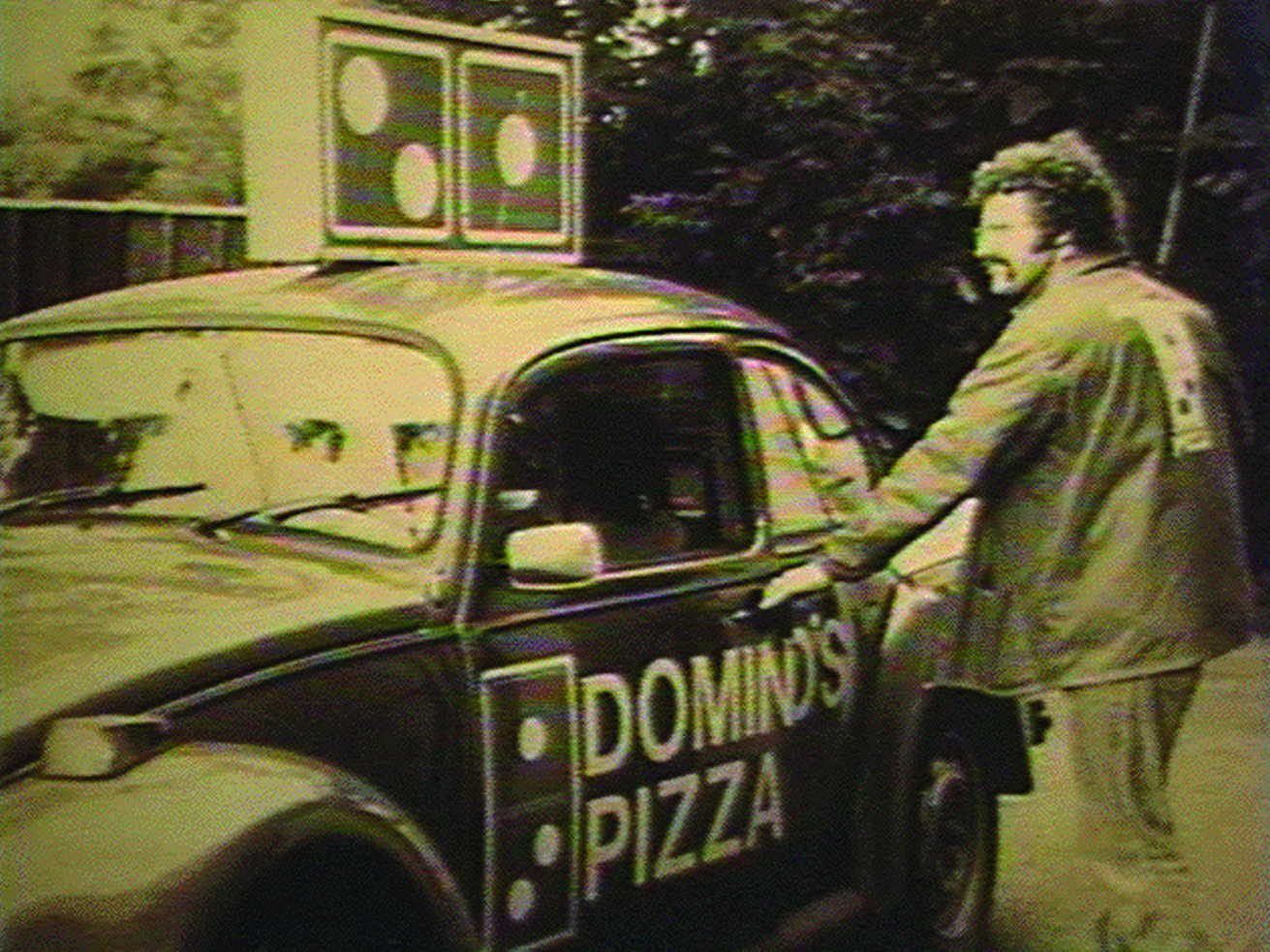Three brands that are modern day household names got a little help in the beginning from Volkswagen vehicles. Domino’s, Ben & Jerry’s, and Nike all spent their early years growing from little passion projects to formidable businesses. The brands grew up and into Volkswagens, then saw them expand far past the wheelbase limits and into major corporations.
Domino’s
Photo courtesy of Volkswagen AG
The Dodge brothers aren’t the only famous or successful all-male duo from the Detroit area. Brothers Tom and James Monaghan founded Domino’s Pizza in 1960 when they bought a small pizzeria in Ypsilanti, Michigan, a southwest suburb of Motor City.
The store purchase cost just $900, about $600 less than the price of a new Volkswagen Beetle at the time. Dominick DiVarti, the original owner of the shop, gave the boys a 15-minute pizza making lesson then turned over the keys to DomiNick’s to them.
James, who had a full-time job as a mail carrier in addition to helping run the shop, sold his share of the pizzeria to get the company a delivery vehicle, a 1959 Beetle.
In the 1950s, the Beetle had evolved from its early years into a body style with the features commonly seen in vintage models that are still on the road today. By the time the Mongahan brothers got theirs, the Beetle had larger taillights that combined the traditional taillamps and turn signals. Twin chrome tailpipes were added and U.S. models had taller bumper guards. The rear rectangular window of previous years’ models was replaced with an oval one in the late ’50s.
By 1965, the brothers had purchased two additional pizzerias and changed the name of the business. There was no going back. Today, there are over 17,000 Domino’s locations worldwide.
According to Volkswagen, the whereabouts of Domino’s first delivery vehicle is unknown. However, a replica of the original is showcased at Domino’s headquarters in Ann Arbor, Michigan.
Ben & Jerry’s
Photo courtesy of Volkswagen AG
Ben & Jerry’s was founded in 1978 in Burlington, Vermont by two New York City-area transplants who had taken a $5 ice cream-making correspondence course offered by Pennsylvania State University that same year.
Ben Cohen and Jerry Greenfield invested $12,000 into their first scoop shop in a converted gas station in downtown Burlington that sat across from what is now The Vermont Pub & Brewery in the space currently occupied by a public parking lot.
In the land of creemees, Ben and Jerry made a big impact, proving popular thanks to their flavorful ice cream and oversized chunks of filling. They didn’t just sell scoops at their shop. The company delivered 2.5-gallon tubs of ice cream to restaurants and shops in Ben’s red Volkswagen Type 3 Squareback station wagon for their first two years of business.
The Type 3 had been introduced at the Frankfurt Motor Show in 1961. It was designed to fill a hole in the VW lineup between the Beetle and the Bus, as a family-friendly auto. Volkswagen began importing the Type 3 Squareback to the U.S. in 1966 where it competed directly with the Chevrolet Corvair.
By 1980, demand took off and Vermont’s harsh winters and road salt caught up with the Type 3. However, the Volkswagen lives on at Ben & Jerry’s South Burlington headquarters today and their factory just down the road in Waterbury. There’s a Type 2 painted on the wall at their in-office Scoop Shop and vehicle inside their shop in downtown Burlington.
Nike
Photo courtesy of Volkswagen AG
Long before Nike was Nike, it was Blue Ribbon Sports. Founded in 1964 by University of Oregon track coach, Bill Bowerman, and U of O track star Phil Knight, the company originally set out to cater to runners, selling Onitsuka Tiger track shoes out of Knight’s car at track meets.
Their first year of business they sold 1,500 pairs. The next that number grew to 8,000. Blue Ribbon Sports added a brick and mortar location in 1967 in Santa Monica, California near the intersection of Pico Boulevard and I-10.
The company’s first employee, Jeff Johnson, marketed the shop and drove his personal vehicle, a Volkswagen Type 2 bus, to track meets where he sold and delivered shoes to runners. The second-generation T2 Bus stood out thanks to its gingham curtains and Onitsuka Tigers dealer sticker up front on the driver’s door.
The original store closed just two years later but within a decade, the company, now retreaded as Nike, owned 50 percent of the athletic shoe market.
In 2019, Volkswagen and Nike teamed up to celebrate their shared history. The companies outfitted a Volkswagen ID. BUZZ CARGO concept van to resemble the original Blue Ribbon Sports delivery van, promoting Nike’s “Reuse-A-Shoe” program and Volkswagen’s electric future.








